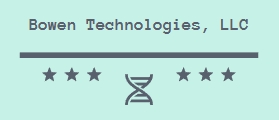Understanding
.jpg)
Cryogenic Grinders and Their Importance
Cryogenic grinding, a process in which materials are cooled to very low temperatures before being grounded into a fine powder, has become increasingly essential across multiple industries. This method enhances the performance of standard grinding by reducing thermal degradation and preserving the volatile compounds within the material. As such, the demand for cryogenic grinder manufacturers has surged, driven by a diverse range of user needs and applications, particularly within the food, pharmaceutical, and chemical sectors.
Key Features of Cryogenic Grinder Manufacturers
Cryogenic grinder manufacturers typically design systems that encapsulate advanced technologies tailored to meet the unique needs of various industries. Some key features that distinguish these manufacturers
.jpg)
include:
- Customizable Grinding Solutions: Many manufacturers provide tailored systems that address specific requirements of businesses, thereby enhancing efficiency and effectiveness in processing.
- Integrated Cooling Systems: Advanced cryogenic grinders often come equipped with cryogenic liquid dispensers that allow for precise temperature control during grinding. This ensures that the material does not undergo thermal damage, retaining its beneficial properties.
- High Throughput and Reduced Particle Size Distribution: Manufacturers focus on achieving fine particle sizes while minimizing oversized particles. Their designs often facilitate continuous operation, enhancing throughput rates.
- Easy Maintenance: Given the demanding use cases in industrial settings, manufacturers ensure that their cryogenic grinding systems are easy to maintain, thereby reducing downtime and enhancing productivity.
Analyzing User Needs and Application Scenarios
The application of cryogenic grinding varies significantly depending on the industry and the specific materials being processed. Understanding these applications helps manufacturers design more effective systems tailored to meet user needs.
In the **food industry**, cryogenic grinding is widely used for spices and herbs. When these materials are ground at ambient temperatures, oils and aromatic compounds can evaporate, diminishing flavor. Utilization of cryogenic processes preserves the integrity of these volatile compounds, resulting in a superior product. Manufacturers must ensure that their systems are capable of handling varying moisture levels and have provisions for bulk operations, as food manufacturers often produce large quantities.
In the **pharmaceutical industry**, cryogenic grinding is crucial for materials sensitive to heat. Many active pharmaceutical ingredients (APIs) can degrade or lose potency when subjected to elevated temperatures during grinding. Here, the ability of cryogenic grinders to maintain low temperatures ensures that the pharmaceutical properties and efficacy of the drugs remain intact. Additionally, compliance with regulatory standards becomes necessary, making it essential for manufacturers to meet stringent quality requirements.
The **chemical industry** also benefits from cryogenic grinding, especially when dealing with polymers and sensitive compounds. In some processes, grinding at lower temperatures reduces the risk of oxidation and ensures better homogeneity in the end product. Cryogenic grinders designed for these applications must accommodate specific chemicals and be resistant to corrosion and wear.
Technical Specifications and Comparative Analysis
When evaluating cryogenic grinder manufacturers, users should consider various technical specifications that may influence their choice. The following table outlines essential parameters that should be reviewed:
| Parameter | Description | Ideal Range |
|---|---|---|
| Grinding Temperature | Minimum operational temperature for effective grinding | -196C to -50C |
| Capacity | Amount of material processed per hour | 50 kg/hr to 1000 kg/hr |
| Particle Size | Averaged processed particle size | 100 m to 500 m |
| Power Consumption | Energy consumption based on usage | 5 kW to 30 kW |
| Material of Construction | Material used for manufacturing the grinder | Stainless steel, high-carbon steel |
By considering the above specifications, users can make informed choices based on their unique operational requirements. Furthermore, its advisable to consult with manufacturers regarding customization options, service support, and potential for scalability as the demands of their productions evolve.
Conclusion: Choosing the Right Cryogenic Grinder Manufacturer
Selecting the right cryogenic grinder manufacturer involves a thorough understanding of your specific needs and the nuances of your application environment. Manufacturers that offer customizable solutions, integrated cooling systems, and reliable maintenance support will provide distinct advantages. A careful assessment of technical specifications and performance metrics, combined with a clear understanding of application requirements, ensures businesses not only enhance their processes but also achieve better product quality across their operations.
As various industries continue to demand precision and quality in their products, the role of cryogenic grinder manufacturers will become ever more pivotal. Investing in the right machinery can yield substantial long-term benefits, stimulating growth and improving competitiveness in an increasingly demanding market.
